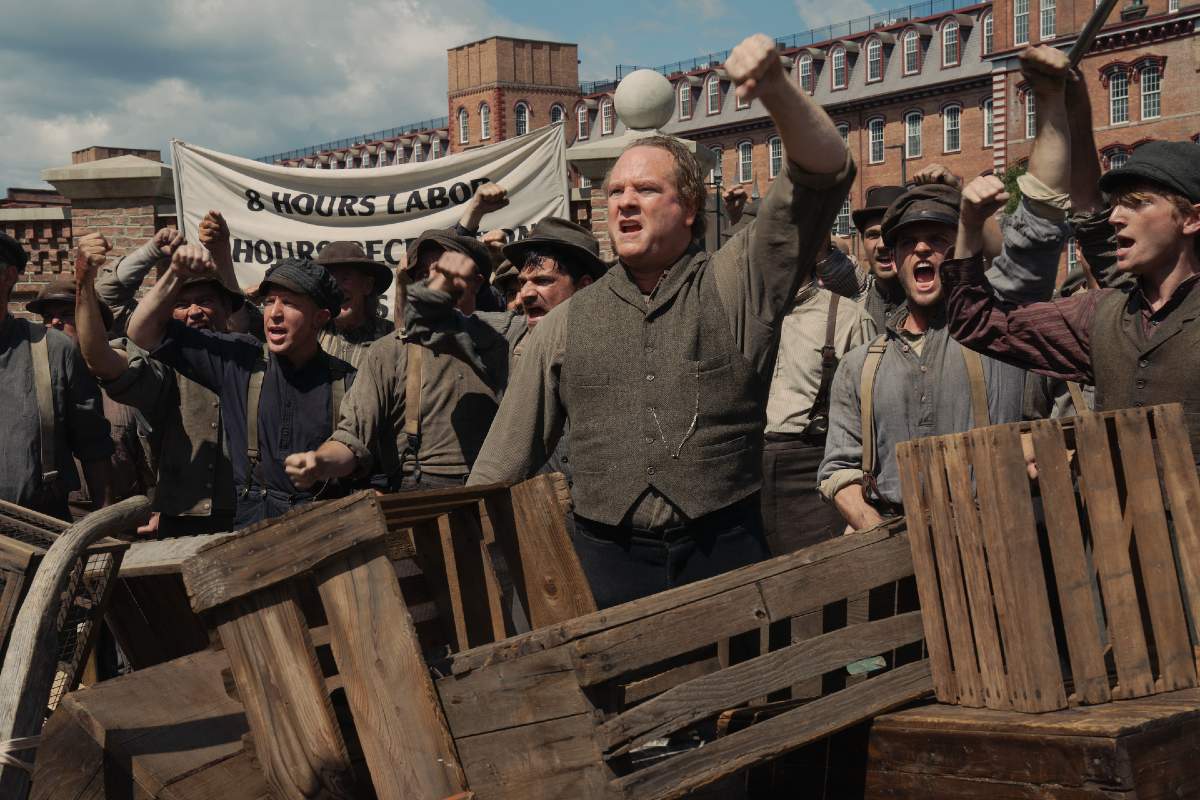The Modern Rich Could Learn Something From the Union Strike in ‘The Gilded Age’

The labor crisis in HBO Max’s The Gilded Age finally came to a head, but the union strike had a surprising ending.
It is hard to watch The Gilded Age and not be in love with George Russell (Morgan Spector), even if he is a robber baron. He’s charming, loves his family, is loyal to his wife, and has an amazing beard. But we must remember that George is based on men who took advantage of laborers and made their fortunes on the backs of others. Although many of us enjoy The Gilded Age for the low-stakes drama and pretty clothes, some points of reality have been seeping in. For George, that means a union strike.
Union strike in The Gilded Age
From the beginning of this season, labor unrest has been a talking point during George’s scenes at work. His great plan to fix the growing dissent at his Pittsburgh steel mill was to invite the head of the union to New York and buy him out. Henderson (Darren Goldstein) arrived in the city and stayed at an ostentatious hotel before visiting the Russells at their over-the-top mansion. A working-class man with a handful of kids visiting George’s ostentatious home went about as well as you would imagine.
As the labor issues increase, George has to visit Pittsburgh to smooth things over and keep his mills producing. When he arrives, Henderson and the steelworkers’ union are ready to die for 8-hour workdays, weekends, and fair pay. George visits Henderson’s house (which is roughly to same size as George’s bedroom) to talk him out of the strike and sees the reality of Henderson’s life. This means many children who need the be taken care of. The oldest child also works at the mill. George leaves to find most of the town standing outside the house. Henderson points out how the mill affects the entire town.
People over profits
Ultimately, the strike happens. The union stands outside the mill, armed with rudimentary weapons and barricaded with pallets. The company calls in police to keep the workers in line. When they won’t back down, the police fire a warning shot, drawing out George and other higher-ups. The others, including George’s secretary Richard Clay (Patrick Page), want to shoot the striking workers. George pleads for the union to stand down. As he looks at Henderson and the other workers, including Henderson’s young son, he thinks about the reality of these people. Before bloodshed happens, George stops the police, much to the irritation of Richard.
Although the entire union strike began and ended much neater than it really would have during the time, it did show something missed in modern labor issues. When George was faced with firing or doing away with the people who worked in his steel mill, he remembered they were human beings. They were just people trying to make a living, see their families, and not get killed while at work. George put his greed and wealth on hold to ensure these workers had the bare minimum. They are people with lives and families, just like their rich bosses. It’s something that wealthy corporations and certain politicians should keep in mind when it comes to labor issues.
(featured image: Max)
Have a tip we should know? [email protected]